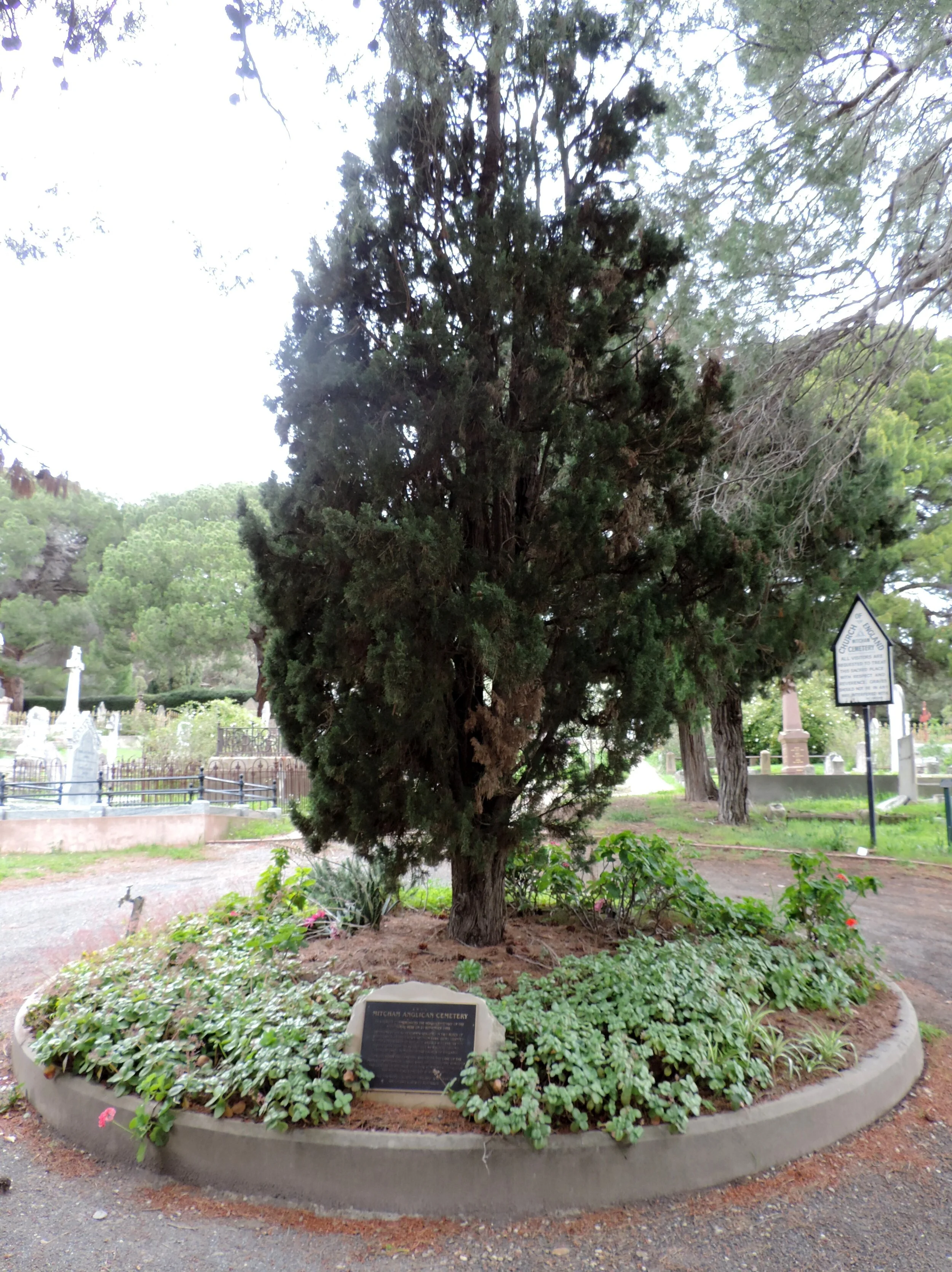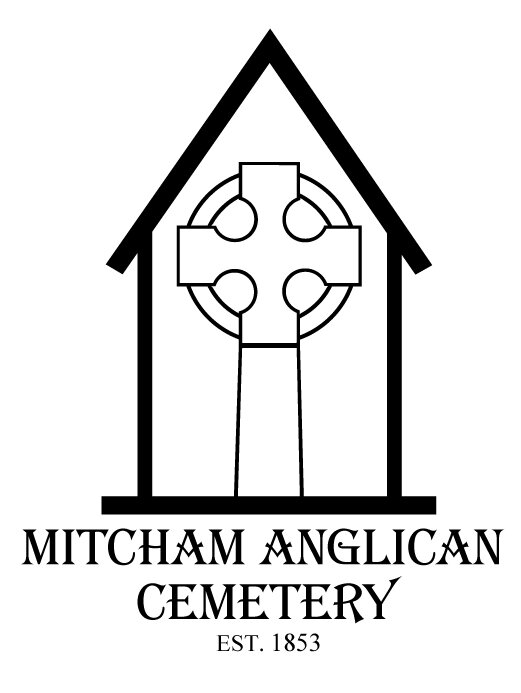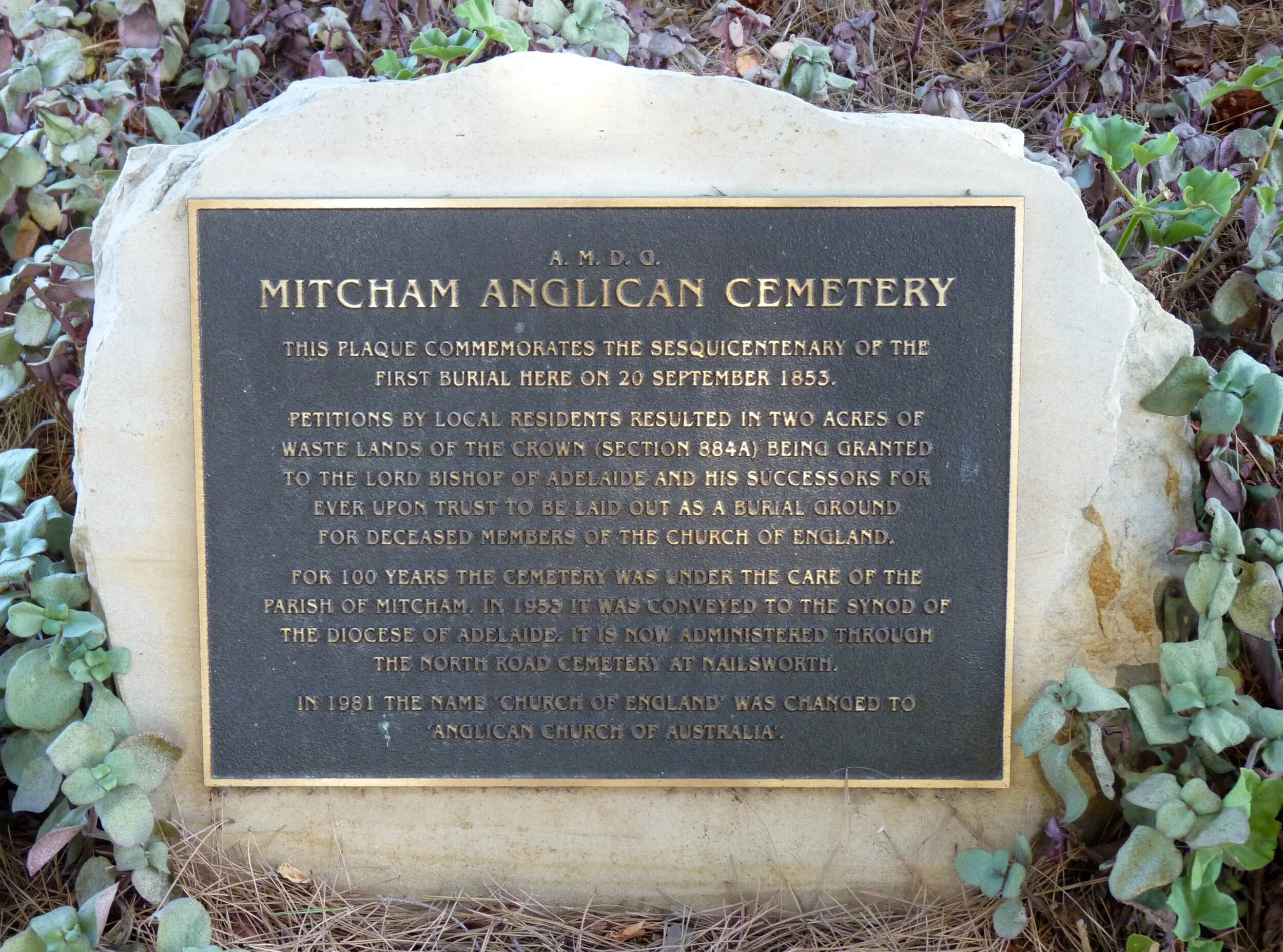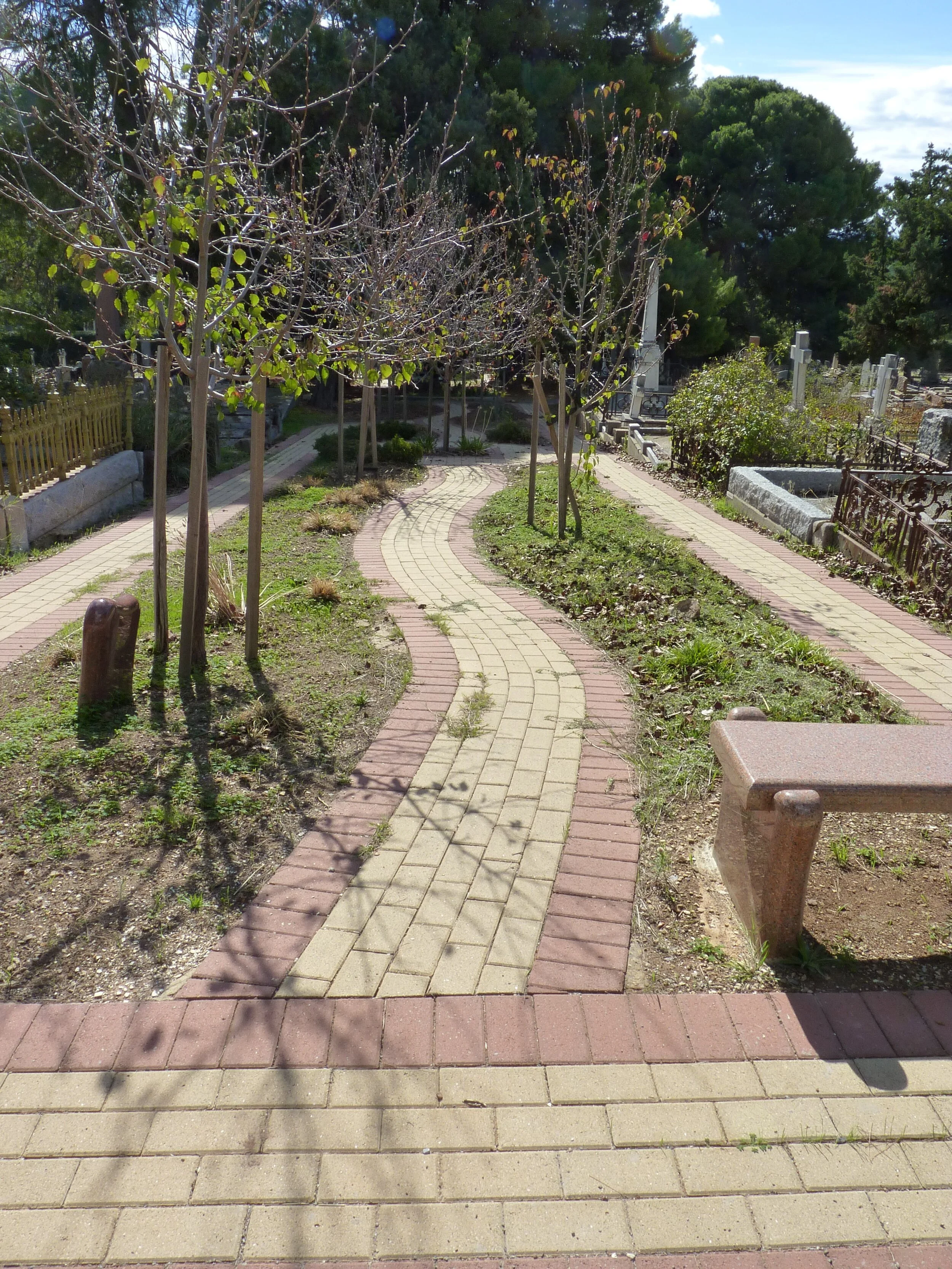Cemetery History
Following petitioning by the local residents, Edward Haydon Burnett, the first incumbent of St Michael, requested that the Church of England establish a cemetery for the local residents. On 22 April 1854 two acres of waste lands of the Crown (section 884A) were granted to the Lord Bishop of Adelaide, Augustus Short, to be laid out as a burial ground for deceased members of the Church of England.
The first burial, that of Mary Oldham, took place on 20 September 1853, seven months before the Land Grant was proclaimed. Her grave is in the top south-east corner of the cemetery by the hedge. A memorial plaque was erected in the central garden in 2003 to commemorate the 150th anniversary of this event.
The cemetery is one of the oldest in the state and is of great historical and cultural significance. The 19th Century character and aesthetic charm are still very much in evidence. The entrance from Blythwood Road is through a pair of handsome wrought-iron gates, and hedges form 3 of the 4 boundaries. Situated on a foothill slope the cemetery is square in shape with no organized layout or numbering of paths and graves laid out in both east-west and north-south directions. Huge pines and cypresses – the traditional trees of mourning – are landmarks in the district, most being over 100 years old. The central garden bed around which horse-drawn hearses could turn is the focal point of the cemetery.
Until 1940 this cemetery was controlled and maintained by the Mitcham Parish. Since then it has been administered by the Synod of the Diocese of Adelaide, with the curator and staff of the North Road Cemetery responsible for the care and upkeep of the cemetery, as well as maintaining all the records for the site.
In 2007, a cremation walk was established south of the central garden bed.





